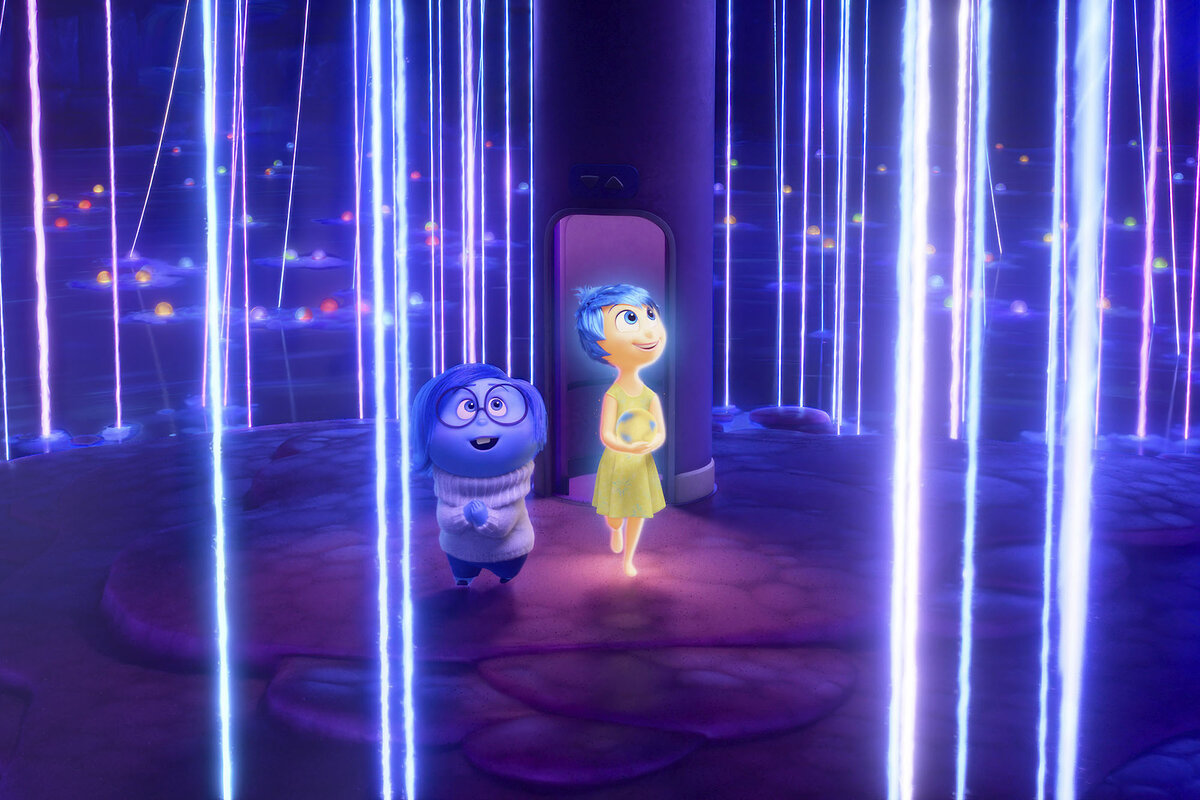‘Inside Out 2’ offers all the feels – and a great time at the movies
Loading...
“Inside Out 2” opens with our protagonist in her natural setting, playing ice hockey with her friends. With the emotions audiences grew familiar with from the first film working in unity, Riley (voiced by Kensington Tallman) is a dazzling talent. But when life becomes more complicated, Riley struggles to cope with the pressure – and a new cast of characters emerges. They’ll be familiar to anyone who has made it through the teenage years.
“Inside Out 2,” which had the biggest opening of any movie since “Barbie,” harkens back to a gold standard for Pixar. After recent direct-to-streaming disappointments like “Luca” (2021) and “Turning Red” (2022), “Inside Out 2” is a welcome return to form. It offers a refreshing perspective on mental health that draws in new audiences while reminding the rest of us why we continue to watch the studio’s films.
The sequel picks back up with Riley, now 13 and a rising high school freshman, prepping for a three-day hockey camp with her two best friends, Grace (Grace Lu) and Bree (Sumayyah Nuriddin-Green). Inside her neurological control center, the colorful crew of Sadness, Disgust, Anger, Fear, and Joy have mastered co-piloting. Then, a brand-new crew of emotions, brought on by puberty, arrives. Meet Anxiety, Embarrassment, Envy, and the aloof Ennui.
Why We Wrote This
A story focused on“Inside Out 2” doesn’t rise to the heights of Pixar’s greatest classics, like “The Incredibles.” But it’s well worth a trip to a movie theater – a rarity these days. And who couldn’t use a little more Joy in their lives?
In the first movie, 11-year-old Riley faced a series of challenges that were earth-shattering for her, but fairly mundane for the audience: a big move, a disappointing tryout, and a fight with her parents. But in the sequel, the drama doesn’t just play out in the heroine’s head. Riley is breaking into her coach’s office, dyeing her hair, and falling out with her best friends. Some themes, like emotional repression, are familiar chords from the first film. But the follow-up also tackles topics like teenage social dynamics, dealing with change, and self-acceptance.
The new multicolored characters are fun, with hairstyles and clothes that feel true to the emotions they represent. Anxiety (Maya Hawke), for example, has a mess of frizzy hair that makes it easy to imagine she spends her nights planning rather than sleeping. Embarrassment is a gentle giant who hides in his hoodie. And the elusive Ennui is French.
While en route to hockey camp, Riley learns her two besties are headed to a different high school at the end of summer. The news sends Riley into an anxiety-driven tailspin, pushing her to rebuff her friends to impress a group of popular girls.
What’s refreshing is that these girls aren’t a repackaging of popular tropes. They aren’t mean girls or bullies who act as foils to Riley’s kind and understanding best friends. They’re perfectly nice. They respect and encourage Riley, and at various moments, even sympathize with her. Riley’s struggle to be cool is an internal one, and it’s familiar for anyone who’s struggled to carve out a place in the vast and intimidating social environment of early adolescence.
A new feature within Riley’s neurological command center is her glowing sense of self, made up of her memories and personal beliefs. As the story unfolds, and Riley’s sense of self changes, Joy (Amy Poehler) and her crew struggle to let go of the version of Riley they’ve worked so hard to build.
This comes with some poignant lessons, both for Riley and her emotional stewards. As the old emotions search the recesses of Riley’s consciousness for her lost sense of self, Joy can’t quite maintain her native optimism. “Maybe that’s what happens when you grow up,” she says. “You feel less joy.”
But she, and Riley, emerge from the trial more well-rounded and resilient. Joy realizes that she can’t protect Riley from even her most negative emotions, and Riley comes to accept that she can make mistakes, even while striving to be the best version of herself. The message is an important one, though it’s not very surprising. Still, compelling visuals and skillful performances from the voice actors make it heartwarming and effective.
The strongest feature of “Inside Out 2” might just be its relatability. For children and teenagers, the similarities are enough to make you cringe. For parents, Joy’s realization that she can’t protect Riley from everything will tug at the heartstrings. For the rest of us, Riley’s triumphs and pitfalls will inspire many emotions, from delight to heartache. And as we learn from Joy, it’s probably best to let yourself feel them.
“Inside Out” was heralded as an instant classic in 2015, and it’s hard for a sequel to live up to that mantle. The new movie can’t recreate the novelty of getting a peek inside the mind of a preteen.
“Inside Out 2” doesn’t rise to the heights of Pixar’s greatest creations, like “The Incredibles.” And there’s nothing in it that matches the indelible first 10 minutes of “Up.” But it’s well worth a trip to a movie theater – a rarity these days. And who couldn’t use a little more Joy in their lives?
“Inside Out 2” is rated PG for some thematic elements.








